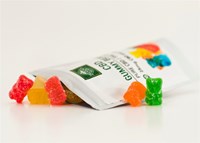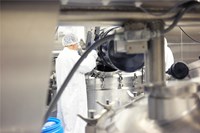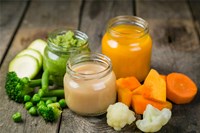Mixing Challenges
Sign up to be notified of our new blog posts.

How Precision Mixing Enhances Batch Consistency in Pharmaceutical Manufacturing
Learn how precision mixing technology can improve batch consistency in pharmaceutical manufacturing by ensuring even ingredient distribution and temperature control.

Pet Food Safety Incident Has Manufacturers Reviewing Their Operations
Pet food safety has been a hot topic in the industry since the 2011 enactment of the Food Safety Modernization Act (FSMA), which established stringent requirements for both human and pet food manufacturers.

Why Mixing is So Vital to Organic Food Processing Operations
Organic food processors go to great lengths to ensure authenticity in their products. But if their end-product lacks the slices, chunks and homestyle texture expected of fresh and natural ingredients, then the extra effort and cost to comply with organic certification could go for naught. The reality is, if it doesn’t look organic, consumers may not buy it.

The Earlier the Better: When Food Manufacturers Should Bring Processing Equipment Engineers into New Product Development
Chances are, if you are in the food manufacturing industry, you think a lot about new product development. Many food manufacturers consider it to be the driving force of their organic growth. They make great investments to develop new products that attract consumer interest and widen their revenue streams. Yet, despite the emphasis, it is not uncommon for manufacturers to limit their potential by setting up shortsighted or sub-optimized production processes to produce their new products.

Equipment Considerations for Plant-Based Food Processing
The plant-based food market is expected to expand at a compound annual growth rate (CAGR) of 11.9% from 2020 to 2027, and will reach $74.2 billion by 2027. As food manufacturers look to ramp up production of plant-based products, they must determine how to configure their processing equipment to effectively scale operations.

The CBD Product Market is Still Poised to Take Off, But Think About Operations Before You Jump On
Cowen & Co predicts the American CBD market could reach $16 billion by 2025. And that’s just for CBD. Should marijuana/THC become legal for at least three-fourths the population, Nielson projects an additional $34.8 billion! Sure, manufacturers are still working their way through uncertainty, particularly in food and beverage, where legal issues governing CBD’s use in consumables have yet to be resolved. But those seeking to capitalize would do well to think now about the unique production challenges of CBD and THC product manufacturing.

Limitations of Conventional Mixing Systems in Pharmaceutical Topical and Transdermal Drug Product Applications
The inherent nature of high-viscosity pharmaceutical drug products poses real operational challenges to manufacturers. To succeed, processors must seamlessly combine safe and precise ingredient loading, powerful and durable blending, and sterile and efficient cleaning within their operation. Some manufacturers have found it difficult to solve these challenges due to limitations of conventional mixing systems. Here are some of the most common issues with conventional mixing systems in pharmaceutical and other high-viscosity product settings.

How to Meet the Challenges of High-Viscosity Mixing
Producing ointments, gels and other high-viscosity products is a challenging process. These stringently regulated products offer a high degree of difficulty for every manufacturer. Selecting the most efficient and cost-effective mixing solution can help you meet those challenges head on, but choosing the right mixing solution may be more difficult than it first appears.

Lee Industries Explores Blending Options in Latest Production Guide
The latest production guide from Lee Industries explores the differences in the two predominant mixer styles in food production – inclined agitation kettles and horizontal ribbon blenders.